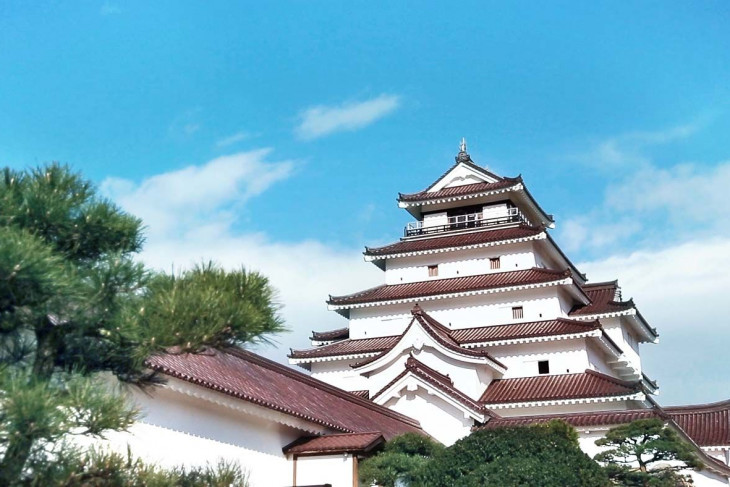
Japan is a land where samurai walked the streets with swords at their hips as recently as 150 years ago. However, those samurai disappeared into the annals of history as the country modernized.
The Aizu region in Fukushima is known as the home to samurai who held out to the very end against the new westernized government army during the civil war that triggered the modernization of Japan. Follow in the footsteps of these true ‘Last Samurai’ through the numerous surviving sites in Aizu and feel for yourself the samurai spirit that Aizu still embodies today.
Aizu was the site of the final large scale battle as part of the resistance to Japan’s revolution of modernization known as the Meiji Restoration. Countless samurai from Aizu gave their lives in battle despite having full knowledge that the war would soon be lost. The history of this civil war, known as the Boshin War, describes how not only the young men, but also the elderly, women, and children gave their lives in battle as samurai.
Among them, one battle unit called the Byakkotai, or ‘White Tiger Force,’ formed of the teenage sons of samurai became legendary during the Boshin War. The boys committed seppuku (ritual disembowelment) together after observing what they believed to be the sight of their castle burning from their vantage point on Mt. Iimoriyama to the east of their town.
If you visit Mt. Iimoriyama today, try and spot the castle that those young warriors watched from the same viewpoint. Tsurugajo Castle, located in central Aizu-Wakamatsu City, was rebuilt after the war. The seven storied central structure of the castle is one of the largest in Japan, and the red roof tiles further accent the beauty of its white walls. It is difficult to describe the beauty with words, particularly during the winter snowfall and when the cherry blossoms bloom in springtime, making Tsurugajo Castle a rare example of medieval Japanese architecture that is both impressive and beautiful in form.
It may be possible to begin to understand the samurai spirit of self-sacrifice as you .
Looking down on Tsurugajo Castle from Mt. Iimoriyama through the eyes of the young men of the White Tiger Force, and pondering what they must have felt when they decided to take their lives, visitors can begin to understand the samurai spirit of self-sacrifice. You can further deepen your knowledge of the White Tiger Force through the many historical records and videos available at the nearby Byakkotai Memorial Hall. Within walking distance, you will find the Former Takizawa Honjin, a building which served as a rest stop for feudal lords and was used as a headquarters during the Boshin War. Here you can still find bullet holes and damage left by swords, evoking the raw violence of the battle fought there.
After seeing Tsurugajo Castle from your vantage point on Mt. Iimoriyama, head straight to the castle keep. The castle features many exhibits including suits of armor and katana swords, and there is a lot of English-language information available about the history and lifestyles of the people of Aizu. By learning of the traditions and culture from the age of the samurai, you will be able to understand more about the samurai spirit that still lives on today in the Fukushima Prefecture’s Aizu region.
Inspired by that spirit, next climb to the observation deck on the top floor of the castle to enjoy an uninterrupted 360 degree view of the city. What will your thoughts be as you take in the view once observed by the feudal lord who lived in this castle?
The Tsurugajo Castle grounds also feature a tea house and Japanese garden that provide yet a deeper sense of Japanese culture. Sipping green tea accompanied by Japanese sweets as you view the seasonal trees decorating the garden will likely sooth your mind and body of the fatigue of your journey, while giving you a taste of the times in which the samurai lived.
Guides can sometimes be found dressed in samurai armor near the main tower of Tsurugajo Castle. If you see them, it is a great opportunity to have your picture taken with a samurai, so don’t hesitate to ask. And if you ask nicely, they may even strike an impressive Samurai pose. There’s no doubt that the photo will make your trip all the more memorable!


